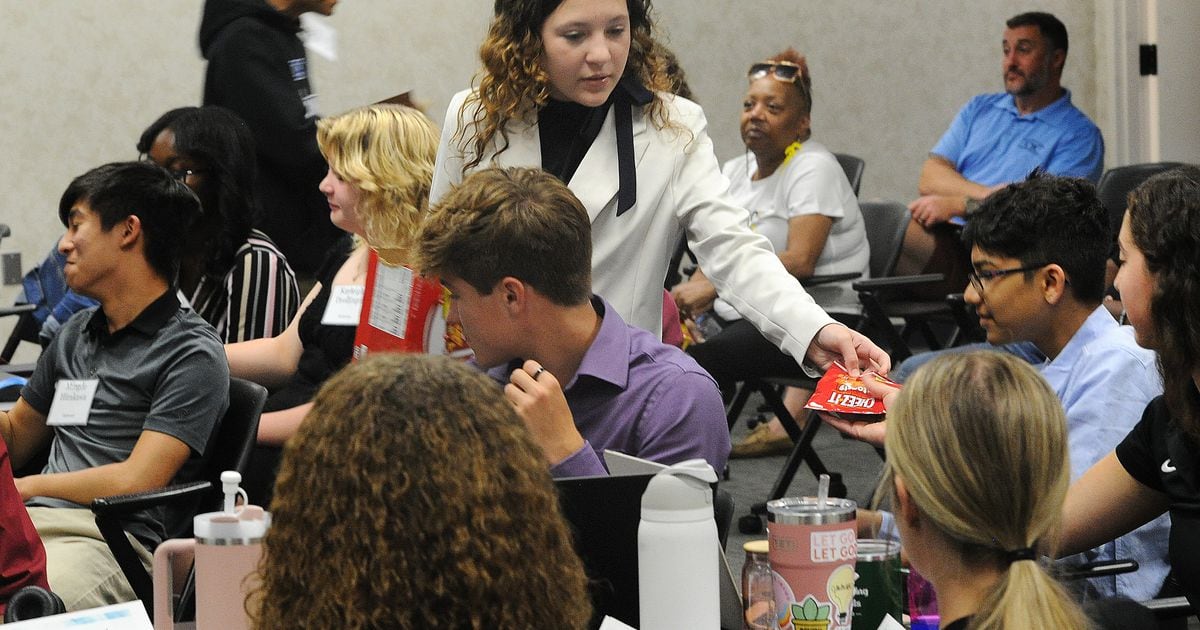âThe internship for me has taught me to speak to more people,â said Madelyn Berk, a Stebbins High School student. âIâm a very quiet person, so meeting new people and understanding that the world isnât that scary is pretty nice.â
Overall, the high school students asked for more opportunities, including being taught how to use AI and limit cell phone use, more access to mental health benefits and how to find their careers.
ExploreDayton Public contracts with Premier Health for athletic trainer services
One group presented what factors were important to young people when considering where to live. A Forbes article recently named Dayton one of the best places for a young person to live, and the students said the factors named in the article â skilled job openings, low housing and living costs, and plenty of restaurants and things to do â mattered to them.
A handful of the students said the factors are making them consider staying when they graduate from high school.
A second group of students presented on the intersection of mental health and technology use, noting that many teenagers overuse technology which can lead to poor mental health outcomes.
The teenagers in this group asked schools and parents to work with them in finding healthy boundaries for technology use.
Grace Weigand, a Vandalia-Butler High School student, said her district is banning cell phone use completely next school year. But she said sheâd prefer to see her school teach boundaries rather than ban cell phones.
âI think in schools, we should have classes teaching us the risks of social media and risks of technology on our mental health and also teaching us how to use those tools responsibly and not overusing them,â Weigand said.
ExploreArea schools reviewing cell phone policies following new Ohio law
A third group talked about the use of AI in schools and in the workplace. The students noted more schools are letting them use AI and they expect to use it in the workforce. The students asked for guidelines and assistance in learning the new tool.
Finally, a fourth group of students gave a presentation on how companies can attract them. The students said internships, job shadow opportunities and career fairs were the best ways to reach them to discuss new jobs.
Berk said Stebbinsâs career tech program gave her access to many different careers she never would have thought of otherwise.
âI hope that more schools, such as everyone in here gets that opportunity,â she said.
In addition to their presentations, the Inside Dayton fellows had multiple visits from professionals. Nivea Jackson, a Stivers School for the Arts student, said she appreciated the interviews tips and being told how to write a resume.
ExploreâItâs not where you start, itâs where you finish;â First DPS program graduate worked for 40 years to get high school diploma
Izabel Martinek, a Fairmont student, said she appreciated the opportunity to learn more about AI. The students had to use generative AI technology in their presentations.
âSomething that I never really considered before is how I can use it to my leverage,â she said.
Bryan Stewart, director of workforce development for the Montgomery County Educational Service Center, said he hopes to foster leadership in younger students. Many opportunities are only open to seniors, but high schools need leaders before then, he said.
âWeâre hoping to plant a seed of leadership,â he said. âEmpower them before theyâre seniors.â



![👍Quick Recap: Premium Coffee PLR?: [New/Quality] Health Benefits Of Coffee & World’s Healthiest Drinks 300+ Piece PLR Bundle 👍Quick Recap: Premium Coffee PLR?: [New/Quality] Health Benefits Of Coffee & World’s Healthiest Drinks 300+ Piece PLR Bundle](https://virtual-coach.com/wp-content/uploads/2016/06/15-tiger.jpg)

